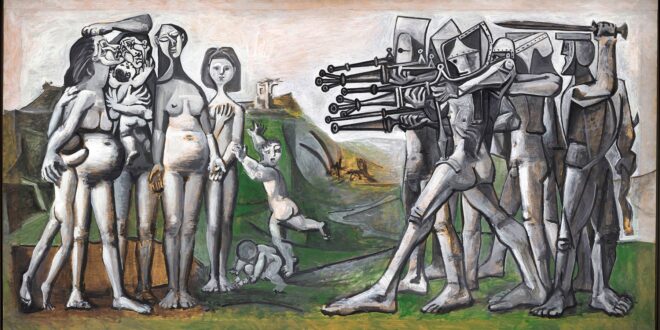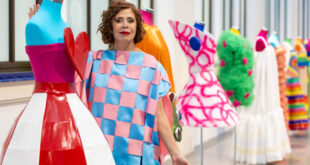PABLO PICASSO’S artworks are now displayed in galleries thousands of kilometres outside of his home town of Malaga. Several of the most important pieces adorn Asian collectors’ walls.
Recent winning bids for his artworks have been going to the east.
“Buste de femme” (1953), a portrait of Picasso’s partner and muse Françoise Gilot, was put up for auction for the first time in 40 years at Sotheby’s in London last month. It sold for £4.3 million to an Asian private collector.
In 2013, Picasso’s “Claude et Paloma”, also known as “Claude et Paloma”, was sold in New York for $28,2 million by a Chinese conglomerate Dalian Wanda Group.
READ MORE Reflections: A groundbreaking exhibition at the Alhambra in Spain’s Granada where Picasso meets Jeff Koons
Even though he had never visited Asia, the people of Asia knew about the Spanish-born artist by the early 1910s. He mingled with famous Chinese influences throughout his life, including renowned Chinese education reformer Cai Yuanpei, the ‘Picasso of China’ Zhang Daqian, and Ming painter and poet Tang Yin.
Picasso drew some inspiration from this region for his art. ‘Massacre in Korea’ painted in 1951, is thought to represent his critiquing response to America’s involvement in the Korean War and the resulting violence.


Masayuki Tanaka of Musashino Art University said Picasso shared a relationship with Japanese artist Taro Okamoto.
Tanaka stated that Picasso had told Okamoto about his Japanese woodblock prints. He said that these were not refined, but older, primitive ones.
Tang Yin is evident in the simplicity and structure of the trees in Picasso’s landscape painting of the French Riviera city Juan-les-Pins.
Picasso has inspired many famous Asian artists. Simon Fujiwara’s “Who vs Who, vs Who?” A Picture of a Massacre, created last year by Simon Fujiwara, is a reference to Picasso’s Massacre of Korea and Guernica.


Qi Baishi, an ink artist from China, created “Peace Dove” in 1952 as his interpretation of Picasso’s famous images of doves. Baishi’s artwork features the dove, which is a symbol of peace and often used as an example. It appears alongside a lotus flower vase. The Chinese words for lotus (he) and vase (ping) make heping — the Chinese word for “peace”.


The ‘Picasso for Asia: A conversation’ at M+ Museum in Hong Kong, is currency showcasing more than 60 Picasso works, on loan from the Musée National Picasso-Paris. These works are displayed alongside 130 other Asian artists, continuing the artistic dialogue.
It’s not the very first time that Picasso’s work has been shown in Asia.
A local Japanese art magazine reproduced “Woman With a Mandolin” (1909), a cubist work by the artist. His works were exhibited in China six years later.
More recently, in 2010, Hong Kong hosted ‘Modern Masters,’ an exhibition dedicated to modern and impressionist art. Former Sotheby’s International Chair Patti Wong, said this exhibit was a ‘launch pad’ to introduce private sales to buyers in mainland China, Hong Kong and Taiwan.
The first Picasso painting sold was in the exhibition.


In 2013, the British auction house Christie’s in London sold Picasso’s very first work of art on the ground, in China. “Homme assis,” sold by a private collector for $1.5M in Shanghai.
More than 300,000 visitors passed through the doors of Beijing exhibit ‘Picasso – Birth of Genius’ in 2018, demonstrating the artist’s popularity with the general public too. In South Korea, 226 paintings were viewed by more than 300,000.


READ MORE
 Costa News Spain Breaking News | English News in Spain.
Costa News Spain Breaking News | English News in Spain.




